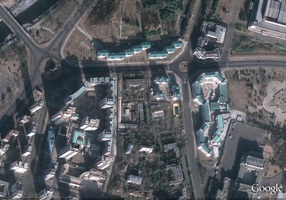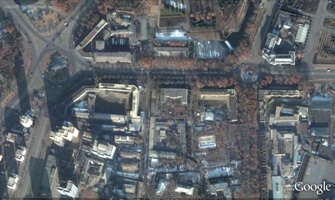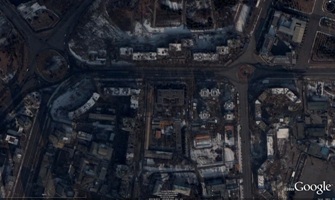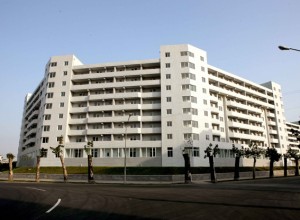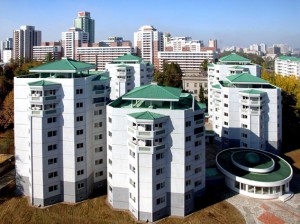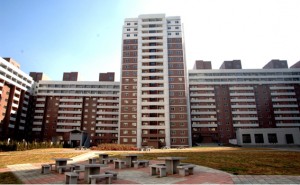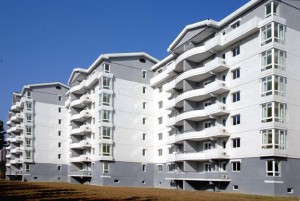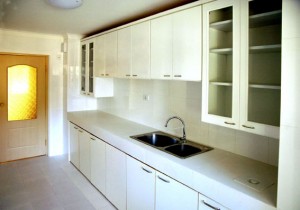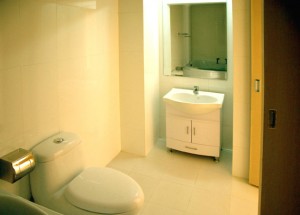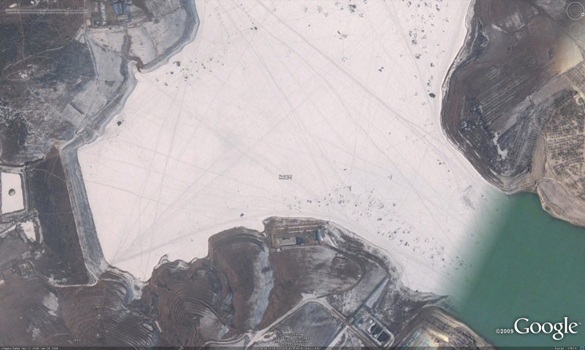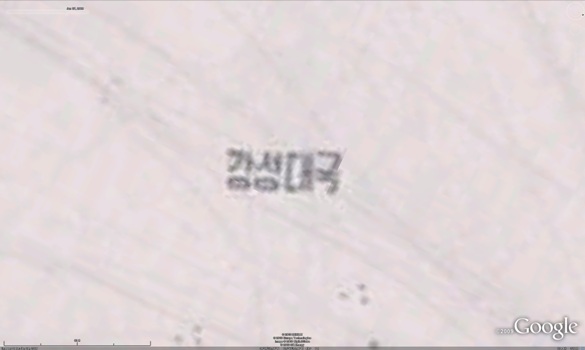UPDATE 4: The DPRK has canceled its football team’s visit to Zimbabwe. According to the Times Live of South Africa:
The North Korean squad had been due to arrive in Zimbabwe on Tuesday to train and play friendlies against local teams before moving onto South Africa, where the World Cup kicks off on June 11.
But a senior source in the power-sharing government of President Robert Mugabe and former opposition leader, Prime Minister Morgan Tsvangirai, said the visit was called off after it provoked outrage among supporters of Tsvangirai’s Movement for Democratic Change (MDC).
UPDATE 3: Zimbabwe continues to put off deliberation. According to Voice of America:
Cabinet discussion of whether Zimbabwe should invite the North Korean soccer team to train in the country through the June-July World Cup period has been put off to next Tuesday as President Robert Mugabe and Prime Minister Morgan Tsvangirai are in Tanzania for the World Economic Forum, a ministerial source said.
Education, Sports and Culture Minister David Coltart told VOA Studio 7 reporter Gibbs Dube that the Cabinet will review the decision by the Zimbabwe World Cup 2010 Committee to invite the North Koreans.
“I presume that if the issue has to be discussed by Cabinet, it will be discussed on Tuesday and as far as I am concerned that team has not yet confirmed that it will be training in this country,” Coltart said.
Political commentator Samukele Hadebe said the North Korean team visit should be canceled to promote healing and reconciliation among Zimbabweans traumatized not only by political violence during the 2008 elections but by older episodes like the 1980s Gukurahundi purge of rival liberation activists in the Matabeleland region.
UPDATE 2: It is possible Zimbabwe could back out of the plan since they have yet to confirm a date. And according to the Guardian:
Zimbabwe’s sports minister, David Coltart, said the dates of the North Koreans’ visit were still to be confirmed. “It is important that the Zimbabwe government deals with this matter in a very sensitive way and does not ignore the history of North Korea here, and does not do anything that might inflame passions or reopen old wounds,” he said.
But he added: “I don’t think it is right to attack a group of young players for what happened 27 years ago in this country.”
Strangely…I met Coltart in Washington a few years ago. He was an MP representing Bulawayo at the time.
UPDATE 1: A Zimbabwe perspective:
Boycotting North Korea solves nothing
Tendai Huchu
4/21/2010The people of Zimbabwe, more than any other nation in Africa, seem pathologically unable to come to terms with their past. As a nation we share the same psychological symptoms of people who have suffered abuse as children.
At the moment there are calls by some for the people of Matebeleland to boycott the visit by North Korea’s football team on May 25 for warm up matches before the World Cup. They site the Gukurahundi massacres in the mid 1980’s as the reason the North Koreans should be boycotted. These people forget that aggressive attempts to court teams like Brazil to Zimbabwe were rebuffed because of our current circumstances. A lot of countries want nothing to do with us but the North Koreans have agreed to come. They could have gone directly to South Africa like everyone else and found facilities there far superior to anything we can offer.
That the Gukurahundi atrocities were a great tragedy in the history of our nation is beyond debate. This is still an issue we have yet to come to terms with, but exactly how boycotting a team we have invited can help redress our past is difficult to understand. North Korea like Zimbabwe is an undemocratic state. These footballers have no influence whatsoever on their government’s policies, especially those from twenty years ago. The majority of them would have been toddlers or not even born when we were slaughtering each other in the 80s. It is absurd to punish these players for something that they had nothing to do with whatsoever. We are quick to protest when New Zealand and England boycott our cricket team because of their differences with the Mugabe government, yet here we are proposing to do the exact same thing to the North Koreans.
The Observer newspaper in the UK quoted Bulawayo-based activist Effie Ncube saying that the invitation is a “profound insult” because of North Korea’s role in training the Fifth Brigade. This is a typical Zimbabwean attitude of blaming everyone else except ourselves for things that have gone wrong.
The North Koreans are a people we should sympathize with. There are too many similarities between them and us to mention. Like us they depend on handouts from the international community or else they would starve. We, better than most other nations, know what it is like to be isolated from the rest of the world. We know what it is like to live under a government which has no regard for its citizen’s rights and opinions. This is an opportunity to show solidarity to a people who have many similar problems to our own.
We can continue to be a bitter and angry people who constantly look back at the past, not taking responsibility for our actions and blaming everyone else for the things we have done to one another or we can move on. The North Koreans are not our enemy, they have never been. Sport is supposed to bring people together, not to divide them. There is nothing that can be gained by protesting against the North Korean football team for something they had absolutely no involvement in. They deserve to be shown our true Zimbabwean hospitality. We can only pray that the future of both our nations is going to be better than the past we are leaving behind.
ORIGINAL POST: According to Times Live of South Africa:
Zimbabwe’s tourism minister has appealed to activists in the western provinces of Bulawayo to drop plans to protest against the North Korean football team’s scheduled camp in the country during the World Cup.
The presence of the team from the dictatorship of President Kim Jong Il has stirred up strong emotions over the massacre in the early 80s of an estimated 20,000 civilians of the Ndebele speaking people of western Zimbabwe, carried out by soldiers of the Zimbabwe army’s notorious Fifth Brigade who were trained by North Korean instructors.
Groups have threatened to carry out protests against the team in the western city of Bulawayo and in South Africa where over a million Zimbabwean exiles from President Robert Mugabe’s rule now live.
“We are totally against bringing the team to Zimbabwe,” said Methuseli Moyo, spokesman for the Zimbabwe African People’s Union party. “Having a team flying the North Korean flag is very provocative.” The team is due in Harare on May 25 and is set to play friendly matches against the Zimbabwe national team in the capital and in Bulawayo, but activists have warned they would make Bulawayo’s Barbourfields stadium a centre of resistance against the North Koreans.
Tourism minister Walter Mzembi was quoted Sunday in the weekly Standard newspaper as appealing to the groups not to mix politics with sport and to allow national healing to take place.
“Sport must remain the bridge for people-to-people contact, probably the only bridge that has remained standing even when nation states are in a state of fall-out,” he said.
“I wouldn’t want to make this a political issue. It’s purely a sports issue.” He said he had extended invitations to the major teams in the World Cup, including Brazil, England and the United States, but North Korea was the only team that had responded.
The North Korean [5th Brigate] instructors were brought to Zimbabwe in 1983 at the request President Robert Mugabe to form a new brigade of the army, composed exclusively of Shona-speaking veterans of Mugabe’s civil war guerrilla army, to put down a limited insurgency against Mugabe’s rule by Ndebele-based guerrilla veterans.
The Fifth Brigade troops immediately developed a reputation for savage brutality, butchering children and pregnant women to deny the guerrillas support among the population of rural areas where they operated.
Military experts say that the Fifth Brigade’s methods were starkly different from the rest of the country’s largely British-trained army.
Mugabe, held responsible for the massacres, has only referred to the murderous period in the country’s history as a moment of madness. Demands for acknowledgment of the brutality are rising round the country, but two weeks ago police forcibly closed down an art exhibition portraying the suffering of the period, and arrested the artist.
Additional information:
1. Here is a satellite image of Barbourfields stadium. (I visited Bulawayo in 1996 and it was a lovely town at the time).
2. Last I read North Korean laborers were building football stadiums in South Africa for the World Cup. This was in dispute and I do not know whether it has been confirmed or disproven.
3. North Korean laborers built Zimbabwe’s Heroe’s Acre. Here is a satellite image of it.
4. And just for fun, here is a satellite image of Robert Mugabe’s retirement palace. If you view the location in Google Earth, you can scroll through historical imagery to see this and neighboring houses under construction.
















